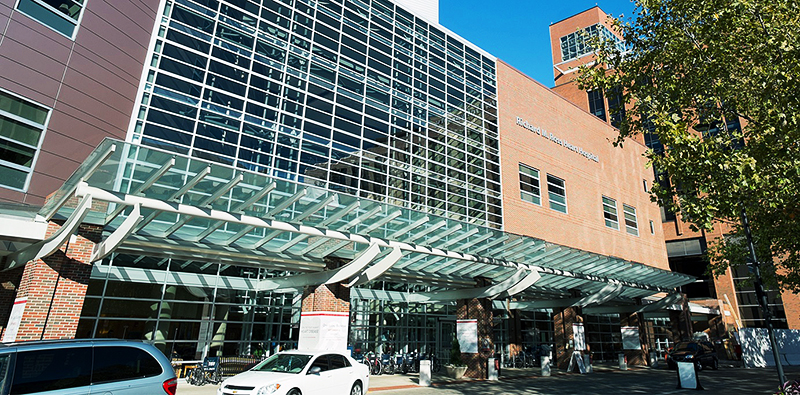
The Ross Heart Hospital, a location in which LDL Apheresis is offered in Central Ohio. Credit: Courtesy of Marti Leitch
The Ohio State Wexner Medical Center is now offering a new treatment for patients suffering from extremely high cholesterol.
This treatment is especially important for Christian Jacobs, a 24-year-old student at Mount Carmel College of Nursing, who said he suffers from high low-density lipoprotein levels as a result of having a genetic disorder called familial hypercholesterolemia. Jacobs originally had to travel to Cincinnati or Cleveland to receive the necessary treatments for his disorder.
“Once a week, I would travel to one of these locations, which usually took one and a half to two hours to get to. Then the treatment takes in total three to four hours, then another one and a half to two (hour) drive back home … It has given me a lot of freedom and has freed up a lot of time to focus on other important things in my life,” Jacobs said.
Now, Jacobs receives treatment once every two weeks as opposed to every week.
LDL apheresis is a treatment that runs a patient’s blood plasma, containing cholesterol, through a machine that is meant to remove the LDL. The blood is then returned to the body through an IV, according to the University of California, San Diego Health website.
LDL, commonly referred to as “bad cholesterol,” is responsible for causing plaque buildup and cardiovascular disease. After one treatment, it is possible that LDL levels can be reduced up to 83 percent and take two weeks to return to its baseline level, according to the same website.
Dr. Kavita Sharma, an assistant professor of clinical medicine in the Division of Cardiovascular Medicine at the Wexner Medical Center, spoke about the typical treatment process for high cholesterol.
“High cholesterol can often greatly be impacted by adequate diet and exercise. For some people, even with an adequate lifestyle, their cholesterol levels are still high, and in those people we strongly suspect a genetics component; an inherited component. And then they need medication,” she said.
The LDL apheresis treatment is meant for specific patients, however, Sharma said.
“Those are people who have got severe familial hypercholesterolemia. Familial hypercholesterolemia is one of those examples of a genetic conditions that lead to high cholesterol values,” she said. “Despite lifestyle, these people have very high LDL cholesterol levels. Based on the severity of the disorder somebody has inherited, a treatment like LDL apheresis may be needed.”
Jacobs said despite the setbacks that come along with having extremely high cholesterol, he is able to reflect on what good has come out of it and hope for the future now that the proper treatment is so close to him.
“I have been treated by doctors all over the world and have had many ups and downs. With all the hardships, though, it has brought many positives to my life,” Jacobs said. “It has given me the opportunity to travel all over the world sharing my story.”
Jacobs has written a children’s book, been featured in The Wall Street Journal and spoken at the American College of Cardiology, as well as the National Lipid Association, about his condition.
In light of this recent implementation, Sharma spoke about the importance of research at OSU and mentioned that it is important this type of treatment can be offered to people in the central Ohio area.
“It is an exciting time in prevention. I am happy to say that we have quite a lot going on in terms of research,” Sharma said. “Cardiovascular disease is the No. 1 killer of Americans. High cholesterol is a major modifiable risk factor for it. Our efforts at improving outcomes for cardiovascular disease have been working.”


